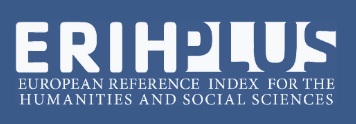Interaction of the Finno-Ugric and Russian cultures in the national costume of the Russian North
Marinenko Oksana V.,
Assistant, Department of Humanities and Physical Education, Engels Technological Institute (branch), Yu. A. Gagarin Saratov State Technical University (Engels, Russia), oksana.vm@mail.ru
Rusanov Viktor A.,
Candidate Sc. {Philosophy}, Associate professor, Department of Humanities and Physical Education, Engels Technological Institute (branch), Yu. A. Gagarin Saratov State Technical University (Engels, Russia), anovrus@bk.ru
The article makes at attempt to study the semantics of the national costume of Arkhangelsk and Vologda provinces basing on the methodological foundations made by Y. M. Lotman and R. Barthes. That allows to consider a costume as a semiotic unit and a method of transmitting information by means of symbols and colors, as well as to identify the ethnic elements in the ornament of Russian, Norman and Finno-Ugric cultures.
Keywords: costume; semantics; symbol; sign; language; ethnos; ornament; decorations; migration.
1. Bart, R. (2008), Mythology, Moscow: Academic Project.
2. The Orthodox Bible (2006), Moscow: The Russian Bible Society.
3. Big Book of holidays of the peoples of the world (2008), Moscow: Eksmo.
4. Vardugin, V. I. (2001), Russian clothing: history of folk costume from the Scythian to Soviet times, Saratov: Children’s Book.
5. Efimova, L. V. (1989), Russian folk costume (the collection of the State Historical Museum), Moscow: Soviet Russia.
6. Kasin, V. ed. (1956), Kalevala, Moscow: State Publishing House literature.
7. Lotman, Yu. M. (2000), Semiosphere, Saint Petersburg: Art–SPB.
8. Maslova, G. S. (1978), Ornament of Russian folk embroidery as a historical and ethnographic source, Moscow: Nauka.
9. Mihailin, V. (2005), Trail of animal words: Spatially-oriented cultural codes in the Indo-European tradition, Moscow: New Literary Review.






















